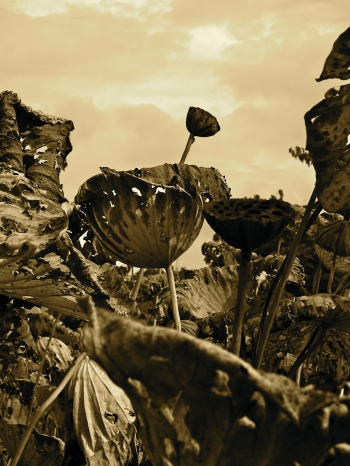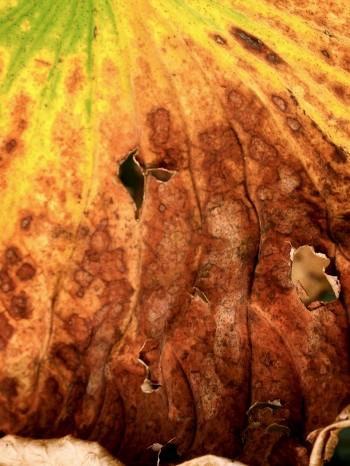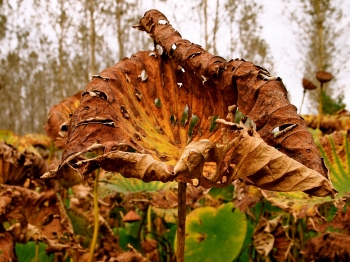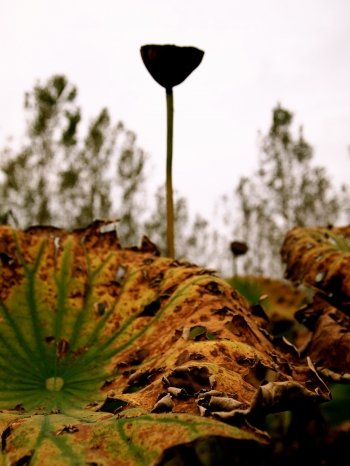Editor's note: Sister Ocean is a Canadian nun ordained in the Vietnamese Zen tradition. She practices in France and blogs about mindfulness practice in daily life on Buddhistdoor International.
The lotus has been used as a symbol of awakening and purity for millennia, from India to the east of Asia, and even into Egypt. Ever since I met this image, I’ve felt a deep connection to this magnificent flower that grows up from the mud to bloom without a trace of mud in sight.
The image of a lotus has come to help me at many points in my practice. It’s inspired me as I’ve stumbled through many of life's difficulties – from grief and cancer, to traffic jams and slow Internet connections – reminding me that every difficulty is an opportunity to grow, that the inconveniences and tragedies of life can actually help us. We cannot reach maturity in wisdom and compassion without time spent in the mud. The lotus reminds me that when i can't see anything growing in me (or around me!), it’s just because it’s hidden.
At first, I only knew of the lotus through drawings, photos and stories. Now, however, I live in a monastery with a real live lotus pond! I am getting to know lotuses as living plants, not just images. As usual, real-life is proving to be much more interesting than an image. Of course the flowers are amazing, but there is more to the lotus than its flower. Lotuses are prized for their delicate aroma and I was really looking forward to experiencing this for myself. One day, I stood by the lotus pond when the flowers were fully in bloom. The breeze shifted and it seemed that the scent of every single lotus hit my nose at once. And all I could think of was Bazooka Joe bubble gum – also pink, but nothing delicate to speak of! I felt nauseated. It was not at all what I had expected!
Another thing I hadn't thought about were the leaves – these huge, bright green platters that seem to float in the air, that then turn brown and stay in the air for months. This is why every fall, a group of us get dressed up in hip waders and go in to cut back the stalks and leaves so that next year's lotuses can come up. We trudge through mud that threatens to suck us in with every step, through a mighty tangle of roots, all the while trying not to harm the frogs and other creatures living there. It makes for a very bizarre experience that all the photos of lotuses in the world didn’t prepare me for.
My biggest surprise was that actual lotus flowers are incredibly delicate. When they open, they are miracles of glowing pink and white with sunshine centres. And within a few short days, the petals fall. Cut one in the morning to bring it inside and the petals will fall by the evening. The roots, leaves and stems are remarkably strong but the petals are like butterfly wings. It didn’t make sense! How could a metaphor for enlightenment fade after a few short days after it’s blooming? Well, that's exactly the lotus. All the anticipation and admiration that I had built up were dashed.
Now why, you might ask, have I spent so much time pondering over a simple plant? Because it's also how i see my practice. I wanted the beautiful dharma experiences to last – don’t we all? And of course this never happened. When profound moments of clarity and peace disappeared, I felt betrayed, later resentful. Of course I knew of the Buddha’s teachings on impermanence, but wasn’t this supposed to be the exception? Isn’t there something inside all of us that doesn’t really believe it? I am slowly coming to understand that just like a lotus blossom covered in aephids, beautiful experiences are not only impermanent but they also coexist with the repulsive. Fortunately, I am also coming to understand that when I let go of ideas of what makes a beautiful lotus and good practice, life becomes a lot easier and much more enjoyable.
Steady cultivation seems to be the key to growing lotuses and dharma practice. Given the basic conditions of living roots or seeds, mud, water and heat, the lotus will come back every year. The oldest recorded lotus germination was from seeds 1300 years old, recovered from a dry lakebed in northeastern China. An individual lotus can live for over 1000 years. It is truly is a miraculous plant! Is it any different with the dharma? No great effort but just enough. Returning to each breath and each step with kindness and diligence. Letting go and starting over, again and again. Relaxing the body. Smiling. Other practices can be wonderful but as long as these basics are tended to, awakening will grow. Buddhadharma is also miraculous!
One day this past summer, as I stood by the lotus pond, they shared a secret with me. They said, Of course our beauty is fragile and fleeting. But look deeply into our fading and you will see our return. I stopped to breathe, to reflect and to bow to my friends. Since then, the lotus has become a new symbol for me: of impermanence, acceptance and faith.
Impermanence: any living being can teach us about impermanence. It is the lotus that has helped me to see that impermanence applies not only to suffering but also to elation.
Acceptance: all blossoms, even concentration, insight and rapture, eventually fade away. That is their nature, not a mistake nor a problem.
Faith: the deep-in-the-bones-knowing that while things pass, nothing is ever lost. After this insight fades, another will arise and bit by bit what remains becomes the fruit of the practice. We love the flowers but a plant is more than its bloom.




















